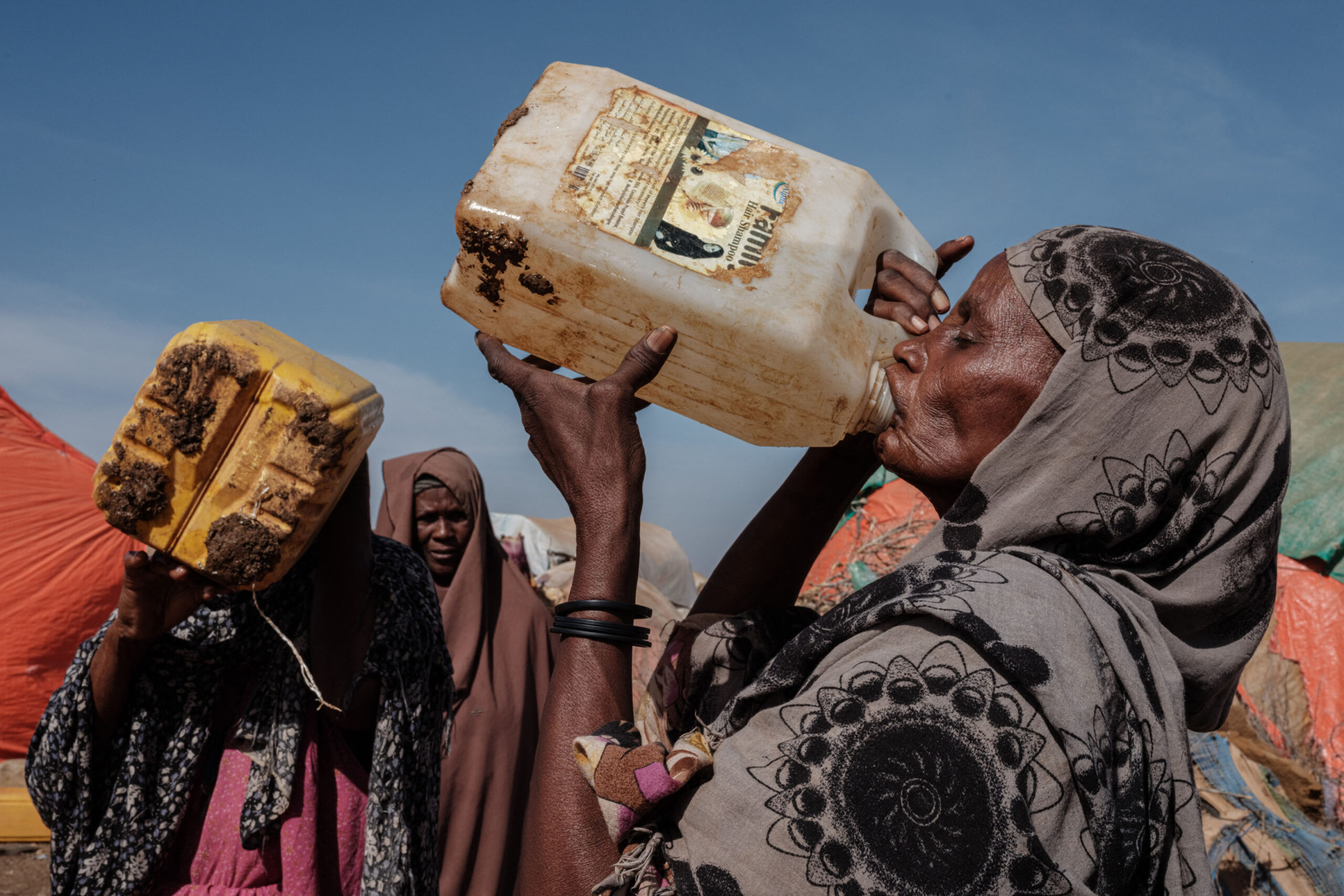The Nexus Between Climate Change and Conflicts in Somalia

By Hani Gabaxey
Somalia, already grappling with decades of conflict and fragile governance, faces an additional threat: climate change. As a country highly vulnerable to droughts, floods, and other extreme weather events, the interplay between climate and conflict poses a complex and dangerous challenge. This report explores the various ways climate change fuels conflict in Somalia, its devastating consequences, and potential pathways towards a more peaceful and sustainable future.
Drivers of Climate Conflict in Somalia
Droughts are a recurring phenomenon in Somalia, leading to severe water scarcity and competition over grazing land. This competition often ignites tensions and clashes between pastoralist communities. Droughts and floods force Somalis to flee their homes, placing a strain on already resource-scarce host communities and potentially triggering social unrest. Over 1.3 million people were displaced by climate-related events in the first half of 2023 alone.
Changes in weather patterns and rising sea levels disrupt traditional livelihoods, particularly in agriculture and fishing. This economic insecurity can fuel frustration and resentment, creating fertile ground for conflict. Additionally, the inability to manage resources effectively and address grievances can create power vacuums exploited by armed groups like Al-Shabaab.
The drought that occurred in Bay region last year, the worst in 70 years, displaced over 100,000 people and fueled competition for water between communities. Flush floods in Hiiraan region displaced over 260,000 people, highlighting the increasing frequency and intensity of extreme weather events. Al-Shabaab has exploited climate-induced grievances and resource scarcity to recruit new members and expand its control in certain regions.
Climate conflict in Somalia is a complex and multifaceted challenge, but it is not insurmountable. By understanding the drivers and consequences, prioritizing adaptation and mitigation measures, strengthening governance, and fostering cooperation, we can help Somalia build a more peaceful and sustainable future where climate change does not fuel conflict but drives progress.
In Somalia, the complex relationship between climate and worsening conflicts triggered by climate change, such as droughts and floods intensifies conflicts by increasing competition for resources like water and land making it difficult to provide aid and causing damage to vital infrastructure like irrigation systems. It is over access and control of land, water, and pastures, highlighting the risk of resource-related tensions for Somalia and with its neighbors
The severe impacts of climate change disrupt livelihoods that heavily rely on weather patterns, leading to a rise in displacement and migration due to climate-related factors. While safe and orderly migration can be a successful climate adaptation strategy, displacement is a damage or loss in itself. Displacement generates and perpetuates vulnerability in natural and human systems in the context of climate change
Climate and security analysts argue that climate-related security risks are transforming the security landscape in which multilateral peacebuilding efforts take place. They argue that climate-related change in Somalia has reduced livelihood options and caused migration. It has also left significant parts of the population in a vulnerable condition. These climate-related security risks contribute to grievances and increase inequality and fragility, which in turn pose challenges to the implementation of state-building and security.
Climate Vulnerability and Resilience in Somalia
Somalia, already grappling with conflict and fragility, faces an existential threat from climate change. This report delves into the intricate web of vulnerabilities, explores their devastating consequences, and proposes pathways towards a more resilient future. Drought, floods, sea level rise, and resource scarcity create a complex reality, impacting livelihoods, displacing communities, and fueling conflict. Understanding these vulnerabilities and building resilience are crucial for safeguarding Somalia’s future.
Climate vulnerability in Somalia is a complex and interconnected issue demanding immediate attention and long-term solutions. Understanding the specific vulnerabilities, their human and economic costs, and potential pathways for building resilience is crucial for guiding future actions. Collaborative efforts, innovative approaches, and investments in adaptation can empower Somalia to navigate the challenges of climate change and build a more secure and sustainable future for its people.
This has resulted in land degradation, loss of biodiversity, livelihood disruption, destruction of infrastructure and cultural loss. This combination of effects has a multiplier effect on human displacement where in Somalia about 3 million people are internally displaced. Food insecurity, the spread of diseases, conflicts and stability have also become prevalent in Somalia owing to the impact of climate change.
Addressing Loss and Damage
The solution to these challenges is multi-faceted. The Somali government, private sector, investors and the international community must take decisive action. Some of the interventions include:
- Adaptation and Mitigation: Investing in adaptation measures like drought-resistant crops, improved water management, and early warning systems can help communities cope with climate impacts and reduce future losses. Additionally, mitigating climate change through global greenhouse gas emission reductions is crucial.
- Loss and Damage Finance: Recognizing the limitations of adaptation, supporting communities recovering from and compensating for unavoidable losses and damage through international finance mechanisms is essential. The recent COP27 agreement on establishing a dedicated Loss and Damage Fund offers a promising step forward.
- Community-Based Solutions: Empowering local communities to manage their resources, develop traditional knowledge-based adaptation strategies, and participate in decision-making processes is crucial for sustainable solutions.
- Strengthening Governance: Effective governance that addresses inequalities, ensures equitable access to resources, and promotes peaceful conflict resolution is vital for managing climate loss and damage and building long-term resilience.
Conclusion
Climate loss and damage in Somalia represent a complex and critical challenge with far-reaching consequences. Recognizing the specific needs and vulnerabilities of the country, prioritizing adaptation and mitigation efforts, implementing innovative solutions, and addressing loss and damage through international collaboration are crucial for supporting Somalia in navigating this complex reality and building a more resilient future for its people.